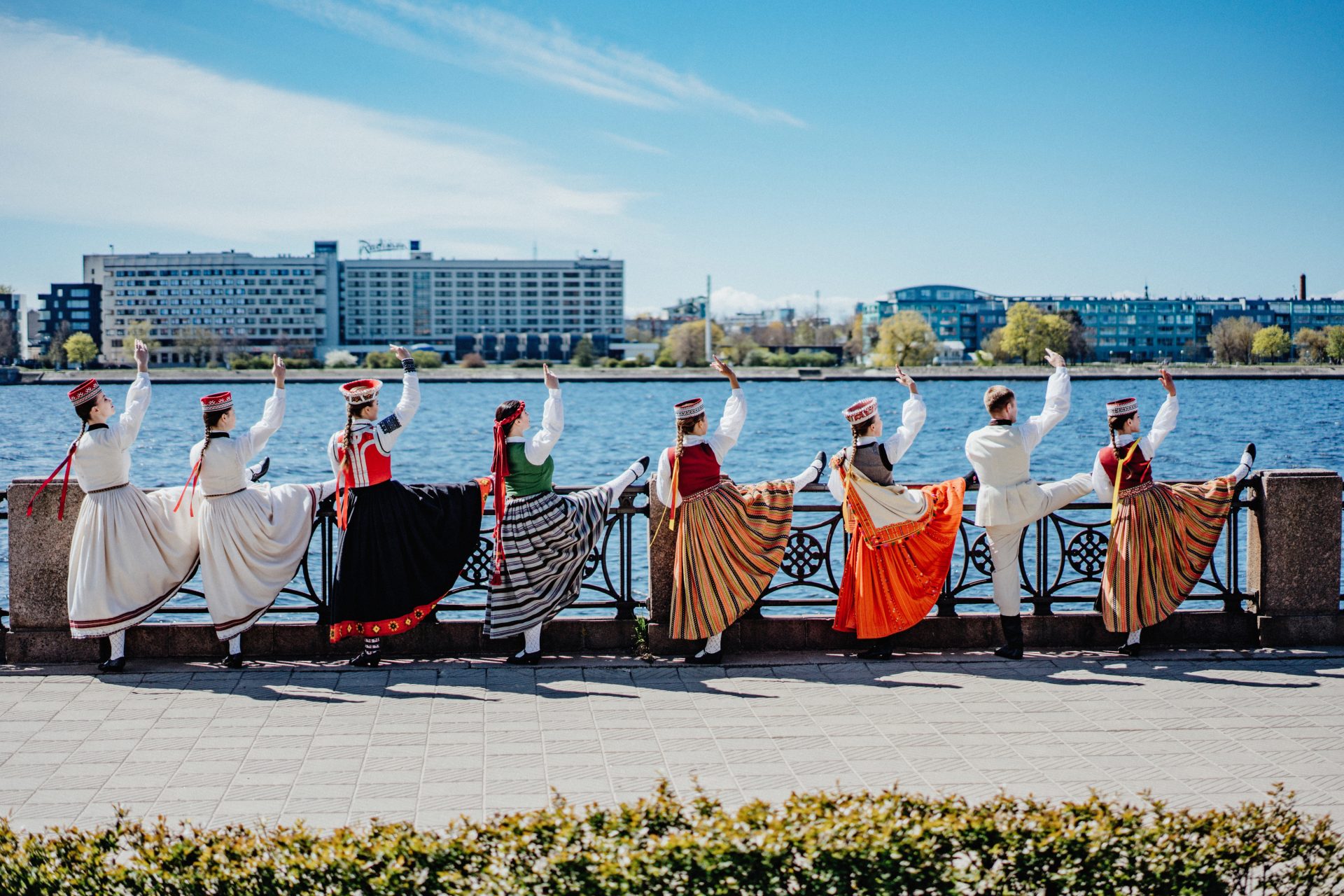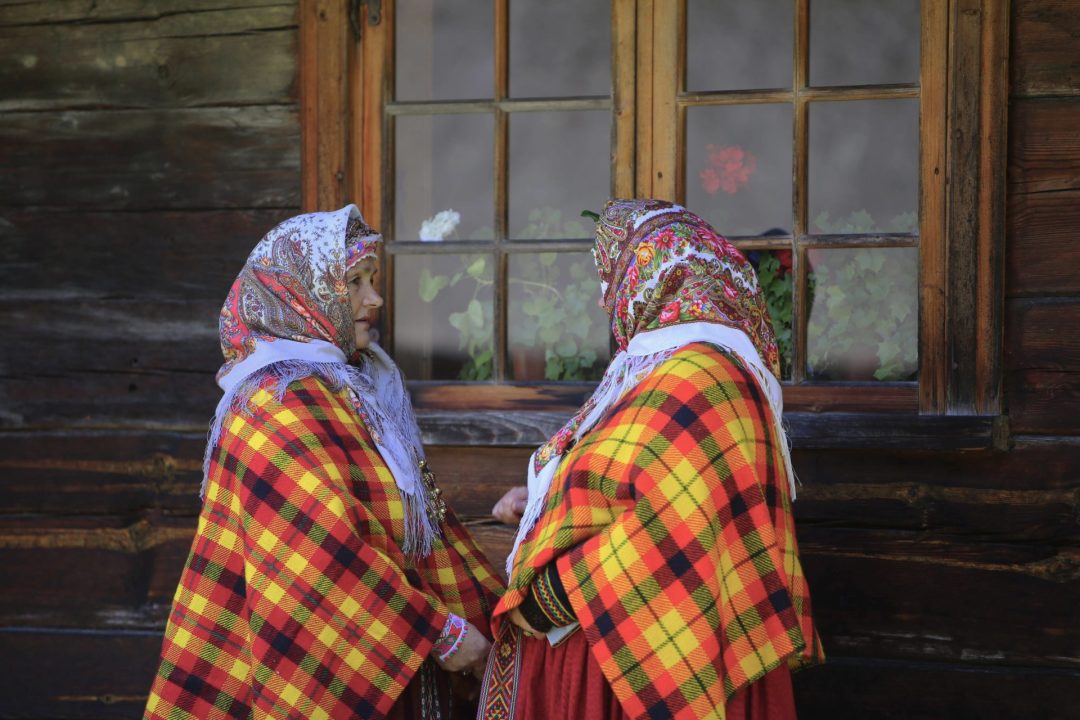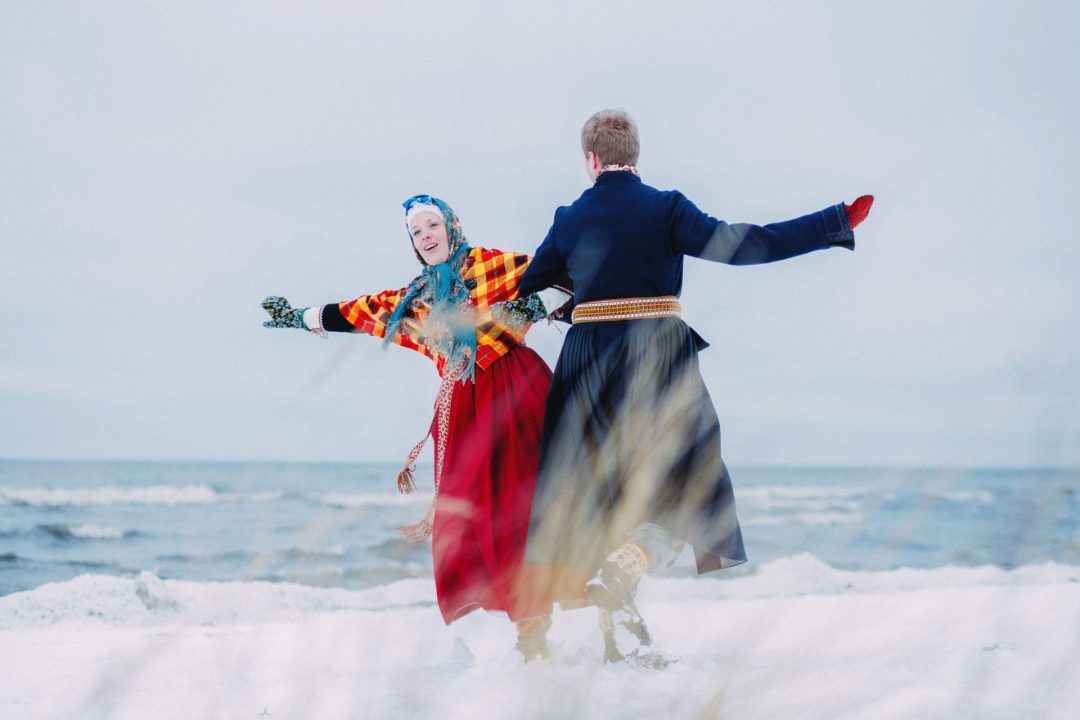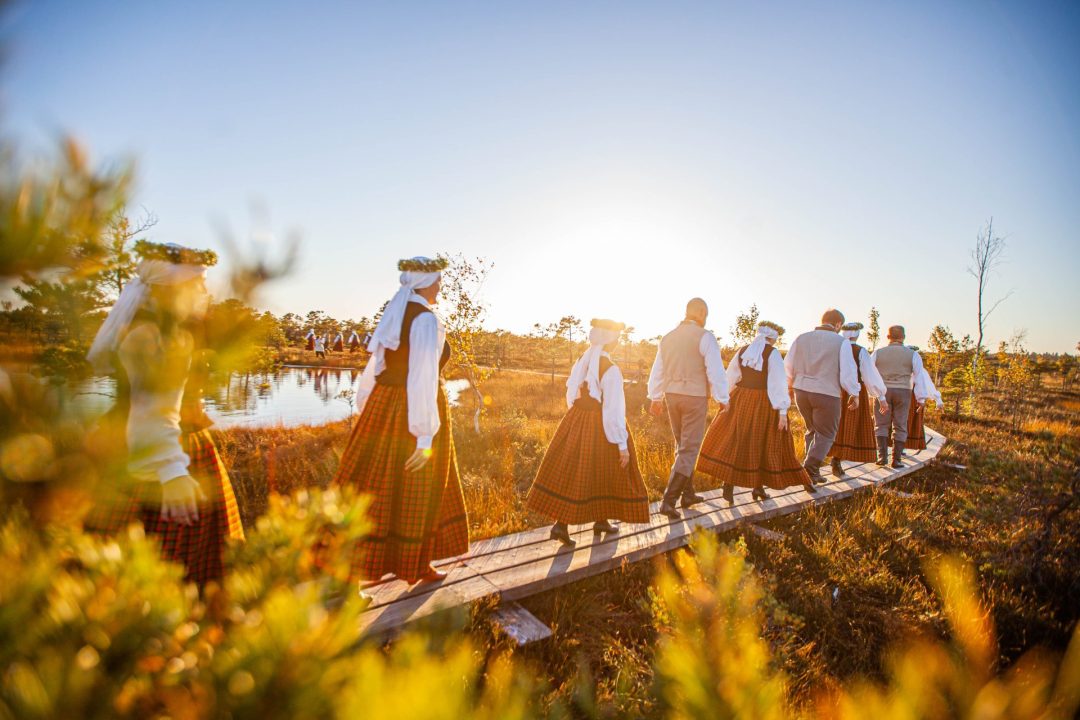How you wear certain parts of the costume also carries meaning. Women’s headwear, for example, can signal whether the wearer is married. Traditionally, on special occasions, maidens would wear crowns, while wives would wear bonnets, hats, or shawls.
The vainags – crown or wreath – is a beautiful element that illustrates the incredible diversity of our folk costumes. It can be made from metal, beads, or flowers. Today, several Latvian makers, such as Brigita Stroda, Arta Kokareviča, and Judīte Bukša, create contemporary versions of the crown, which are popular as wedding accessories or as part of stage outfits. See, for example, the performances of the ethno-pop band Tautumeitas!
Another striking feature is the sakta – a decorative and practical metal brooch for pinning together different parts of an outfit. Again, it comes in many styles and sizes, but the ones belonging to the Suiti, the Catholic community in the western part of Latvia, really stand out. Featuring glistening red stones, they shine brightly against the vibrant Suiti folk costume.
While modern day Latvians have mostly switched to wearing contemporary fashion, we do dust our costumes off for special occasions like the summer and winter solstices, and the Song and Dance Celebration. The festival, which takes place every five years, is arguably the best time to witness the array of folk attire, as thousands of singers, dancers and musicians fill the streets of Riga. The “Uzvelc tautas tērpu par godu Latvijai” (Don your folk costume in celebration of Latvia) campaign also encourages people to dress up for events like the Restoration of the Independence of Latvia on 4 May.










